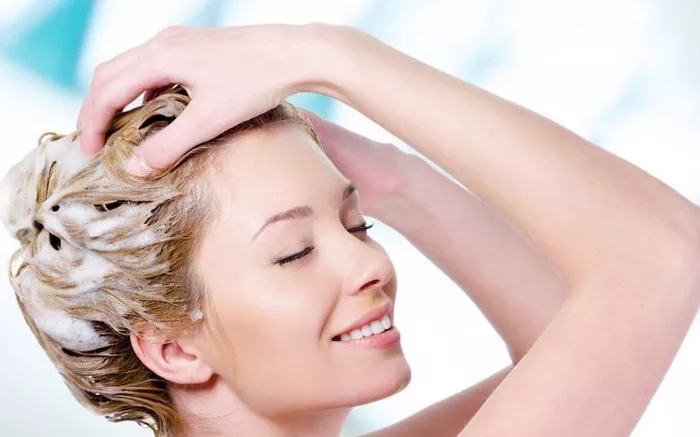As a hairstylist, I often get asked about the best ways to maintain healthy, vibrant hair. One topic that comes up frequently is silicone-free shampoos. Many clients are curious about what these products are, why they matter, and how to choose the right one. In this article, I’ll break down everything you need to know about silicone-free shampoos, including their benefits, how to find them, and recommendations for different hair types. Let’s dive in!
What Are Silicones in Shampoo?
Silicones are synthetic ingredients added to hair care products to create a smooth, shiny appearance. They coat the hair shaft, temporarily masking damage like split ends or frizz. Common silicones in shampoos and conditioners include:
- Dimethicone
- Cyclomethicone
- Amodimethicone
- Phenyl Trimethicone
While silicones make hair look healthy, they don’t repair it. Over time, they can build up on the scalp and strands, leading to dullness, dryness, or even clogged pores.
Why Choose Silicone-Free Shampoo?
Silicone-free shampoos cleanse hair without synthetic coatings, offering long-term benefits:
No Product Buildup
Silicones aren’t water-soluble, meaning they don’t wash out easily. Over time, residue accumulates, weighing hair down. Silicone-free formulas prevent this.
Better Moisture Balance
Silicones block moisture from entering the hair shaft. Without them, natural oils and hydrating ingredients penetrate deeply, improving hair health.
Ideal for Curly or Wavy Hair
Silicones can disrupt curl patterns by creating a “false” smoothness. Silicone-free shampoos enhance natural texture.
Eco-Friendly Options
Many silicone-free brands prioritize biodegradable ingredients, reducing environmental harm.
Scalp Health
Buildup from silicones can irritate the scalp, leading to itchiness or dandruff. Removing silicones allows the scalp to breathe.
How to Identify Silicone-Free Shampoos
Reading ingredient lists is key. Avoid shampoos containing:
- Anything ending in “-cone” or “-siloxane” (e.g., dimethicone, cyclopentasiloxane).
Look for certifications or labels like:
- “Sulfate-Free” (often paired with silicone-free formulas).
- “CG Method Approved” (Curly Girl Method, which bans silicones).
- “Vegan” or “Natural” (many plant-based brands avoid silicones).
Pro Tip: Apps like Think Dirty or INCI Decoder can scan ingredients for you.
Top Silicone-Free Shampoos by Hair Type
For Curly or Coily Hair
SheaMoisture Coconut & Hibiscus Curl & Shine Shampoo
Enriched with coconut oil and silk protein, this gently cleanses while defining curls.
Mielle Organics Babassu Oil & Mint Deep Conditioner Shampoo
Strengthens curls with babassu oil and reduces frizz without silicones.
For Oily Hair
Klorane Balancing Shampoo with Nettle
Controls excess oil using nettle extract and lightweight cleansers.
Briogeo Scalp Revival Charcoal + Coconut Oil Shampoo
Detoxifies the scalp with charcoal and balances oil production.
For Color-Treated Hair
Pureology Hydrate Shampoo
Sulfate- and silicone-free, it protects color vibrancy with jojoba oil and sage.
Olaplex No. 4 Bond Maintenance Shampoo
Repairs damaged, color-treated hair using bond-building technology.
For Dry or Damaged Hair
Moroccanoil Moisture Repair Shampoo
Uses argan oil and keratin to restore moisture without silicones.
Aveda Dry Remedy Moisturizing Shampoo
Buriti oil and mongongo oil nourish parched strands.
For Fine or Thin Hair
Living Proof Full Shampoo
Adds volume with patented Healthy Hair Molecule (OFPMA).
Verb Ghost Shampoo
Lightweight formula cleanses without weighing hair down.
How to Use Silicone-Free Shampoo Effectively
Double Cleanse (If Needed):
If switching from silicone-based products, wash twice to remove existing buildup.
Focus on the Scalp:
Massage shampoo into the scalp to stimulate blood flow and lift dirt.
Use Lukewarm Water:
Hot water strips natural oils; lukewarm helps maintain moisture.
Follow with a Silicone-Free Conditioner:
Pairing ensures your routine is fully silicone-free.
Common Myths About Silicone-Free Shampoos
Myth 1: “They don’t lather well.”
Truth: Lather comes from sulfates, not silicones. Many silicone-free shampoos still foam.
Myth 2: “They’re only for curly hair.”
Truth: All hair types benefit from reduced buildup and better moisture.
Myth 3: “They’re too expensive.”
Truth: Brands like Trader Joe’s and Maui Moisture offer affordable options.
Potential Drawbacks
- Transition Period: Hair may feel rough for 2–4 weeks as silicones wash out.
- Less Instant Shine: Results focus on long-term health over quick fixes.
Conclusion
Silicone-free shampoos are a smart choice for anyone prioritizing hair health, natural ingredients, or sustainability. While the adjustment period can be challenging, the long-term benefits—softer hair, a balanced scalp, and enhanced natural texture—are worth it. Always consult your stylist for personalized recommendations, and don’t hesitate to experiment with brands until you find your perfect match.
Related topics:
Which Shampoos Are Silicone-Free: A Comprehensive Guide
What Is Color Protecting Shampoo?
What Is a Professional Shampoo?


